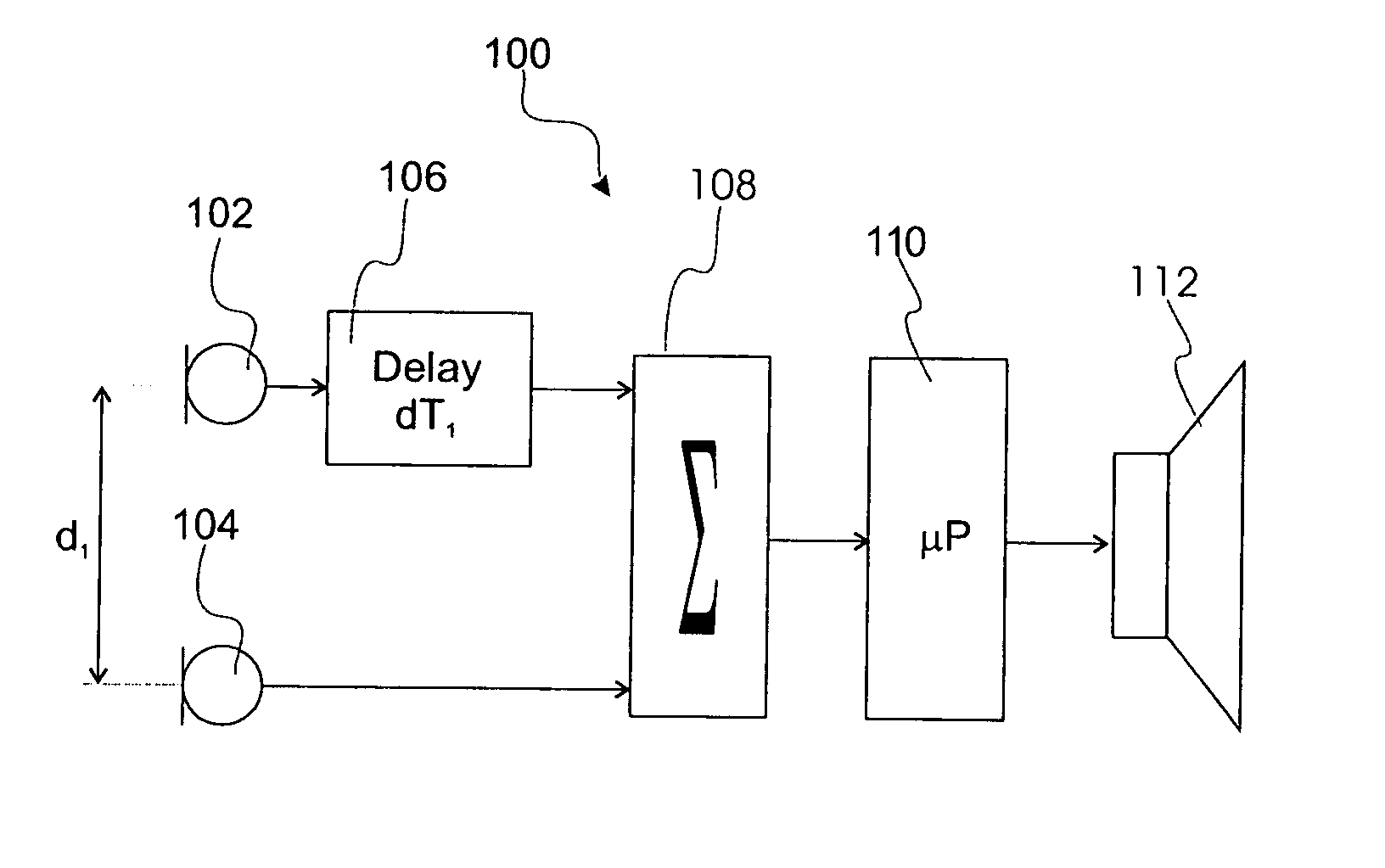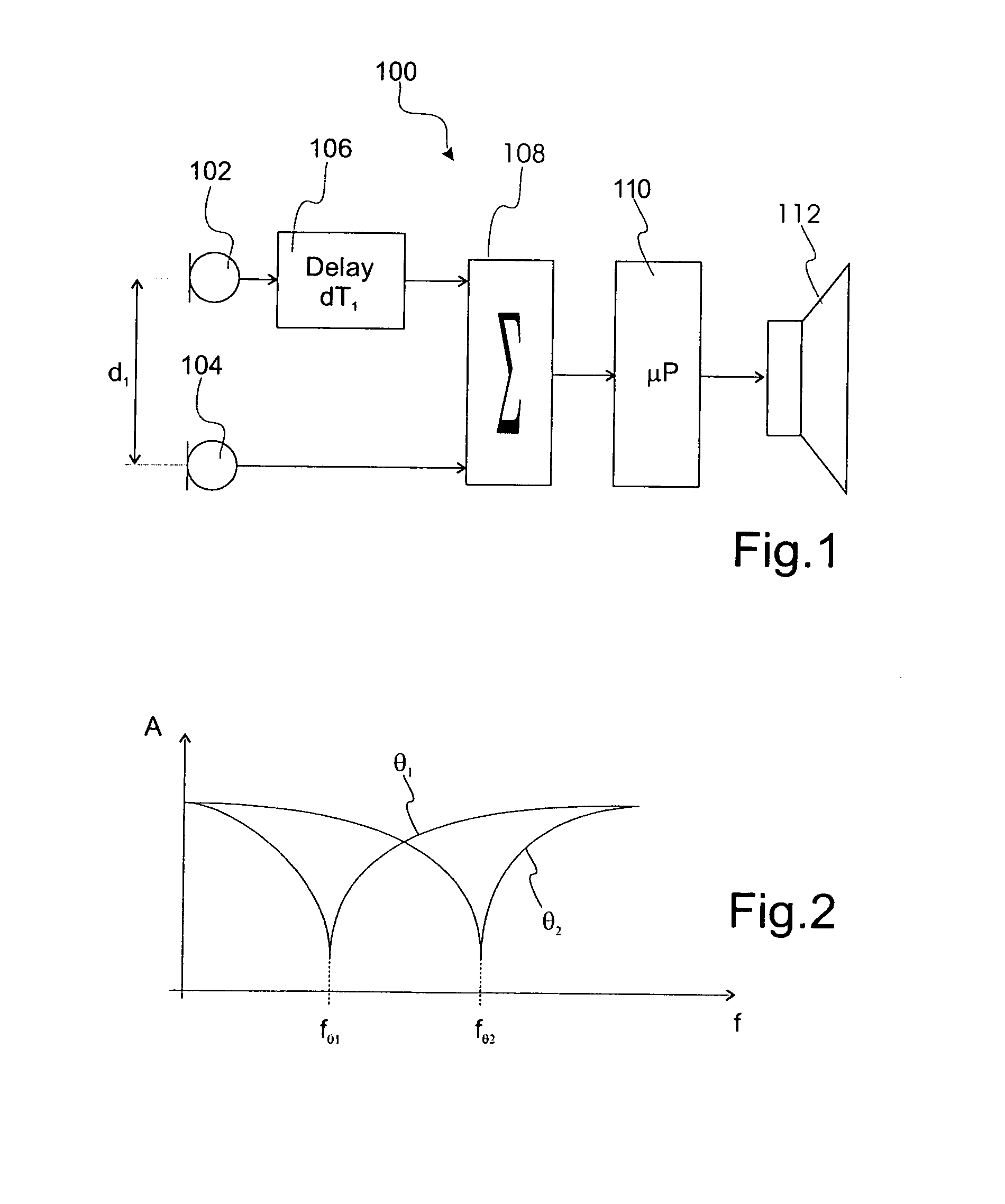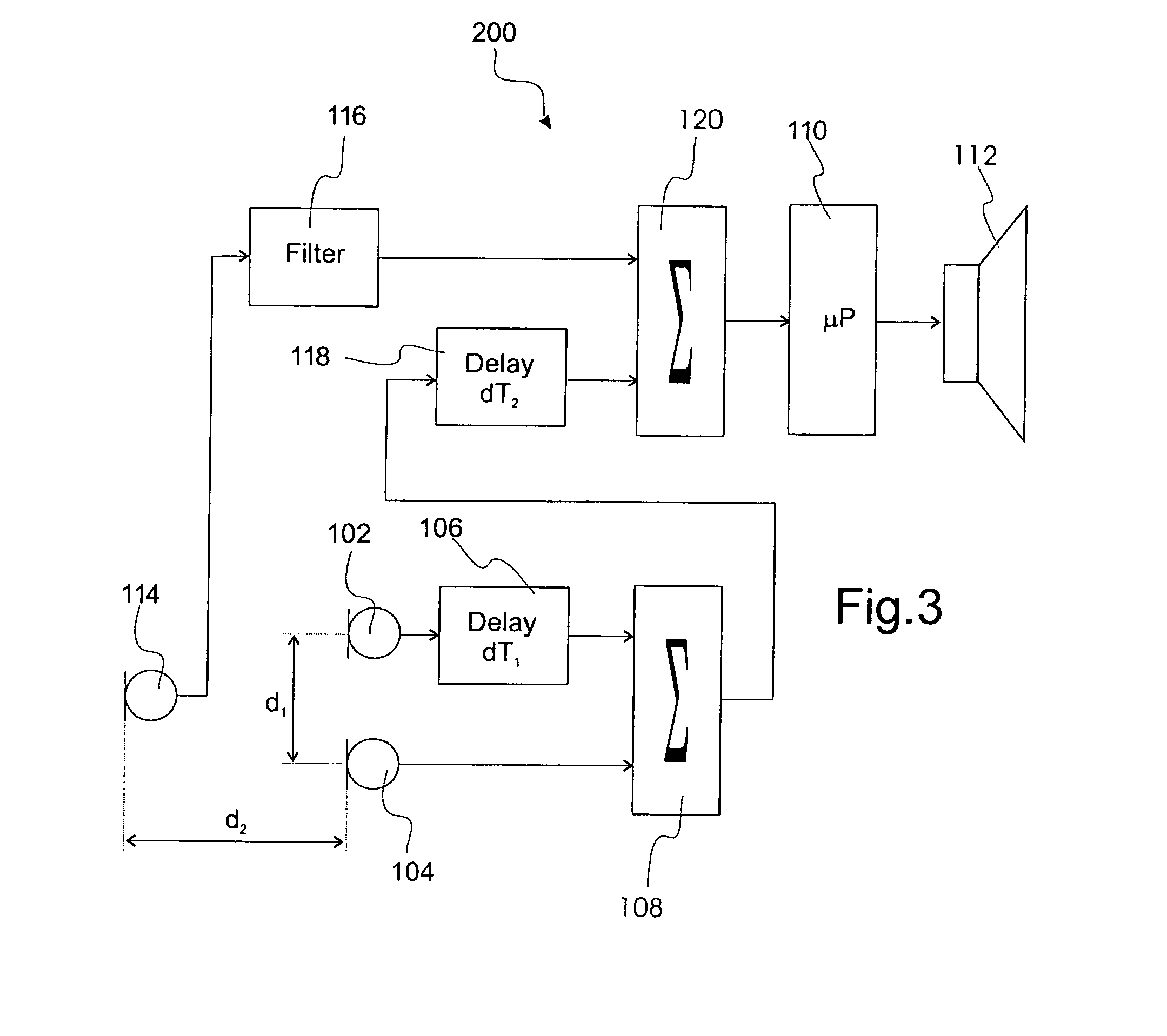System and method for generating auditory spatial cues
- Summary
- Abstract
- Description
- Claims
- Application Information
AI Technical Summary
Benefits of technology
Problems solved by technology
Method used
Image
Examples
first embodiment
[0041]FIG. 1 shows a hearing aid system according to the present invention and designated in entirety by reference numeral 100. The hearing aid system 100 comprises a first and second microphone 102 and 104 for converting the sound into a first and second electric signal, respectively. The first and second microphones 102 and 104 are separated by a distance d, between the centers of the membranes of the first and second microphones 102 and 104.
[0042]The first electric signal is time delayed by a delay unit 106 before being communicated to a first calculation unit 108, which weights and sums the delayed first electric signal and the second electric signal. By positioning of the first and second microphones 102, 104 relative to one another by the distance d1 and by adjusting the time delay of the first electric signal the output of the first calculation unit 108 provides a first auditory spatial cue, which in case of movement of the sound source shifts up and down in the frequency spe...
second embodiment
[0046]FIG. 3 shows a hearing aid system according to the present invention and designated in entirety by reference numeral 200. The hearing aid system 200 comprises some of the elements of the hearing aid system 100, which elements are referenced using the same reference numerals.
[0047]The hearing aid system 200 comprises a third microphone 114 separated perpendicularly relative to the axis of the first and second microphones 102, 104 by a distance d2. The third microphone 114 converts the sound to a third electric signal, which is forwarded to a filter 116 with for example a low-pass cut-off frequency lying for example between 2 kHz and 4 kHz thereby avoiding the occurrence of auditory cues above the cut-off frequency to ensure that the first elevation auditory cue provided by microphones 102 and 104 is not disturbed.
[0048]In one particular embodiment the first and second microphones 102 and 102 may be placed on a behind-the-ear component of a hearing aid, while the third microphon...
third embodiment
[0050]FIG. 4 shows a hearing aid system according to the present invention and designated in entirety by reference numeral 300. It should be understood that the hearing aid system 300 may incorporate features of the hearing aid systems designated 100 and 200.
[0051]The hearing aid system 300 comprises a first and second hearing aid 302 and 304. The first hearing aid 302 comprises elements of hearing aid systems 100 and 200, that is, comprises a first microphone unit 306 generating a first, second and / or third electric signal from a sound. These signals are communicated to a first auditory cue generator 308 generating an elevation auditory cue and / or a front / back auditory cue in a first summed signal communicated to a first processing unit 310 performing the, normally, required processing operations in accordance with sound and hearing impairment of the user before communicating a processed signal to a speaker 312.
[0052]The second hearing aid 304 similarly comprises elements of hearin...
PUM
 Login to View More
Login to View More Abstract
Description
Claims
Application Information
 Login to View More
Login to View More - R&D
- Intellectual Property
- Life Sciences
- Materials
- Tech Scout
- Unparalleled Data Quality
- Higher Quality Content
- 60% Fewer Hallucinations
Browse by: Latest US Patents, China's latest patents, Technical Efficacy Thesaurus, Application Domain, Technology Topic, Popular Technical Reports.
© 2025 PatSnap. All rights reserved.Legal|Privacy policy|Modern Slavery Act Transparency Statement|Sitemap|About US| Contact US: help@patsnap.com



